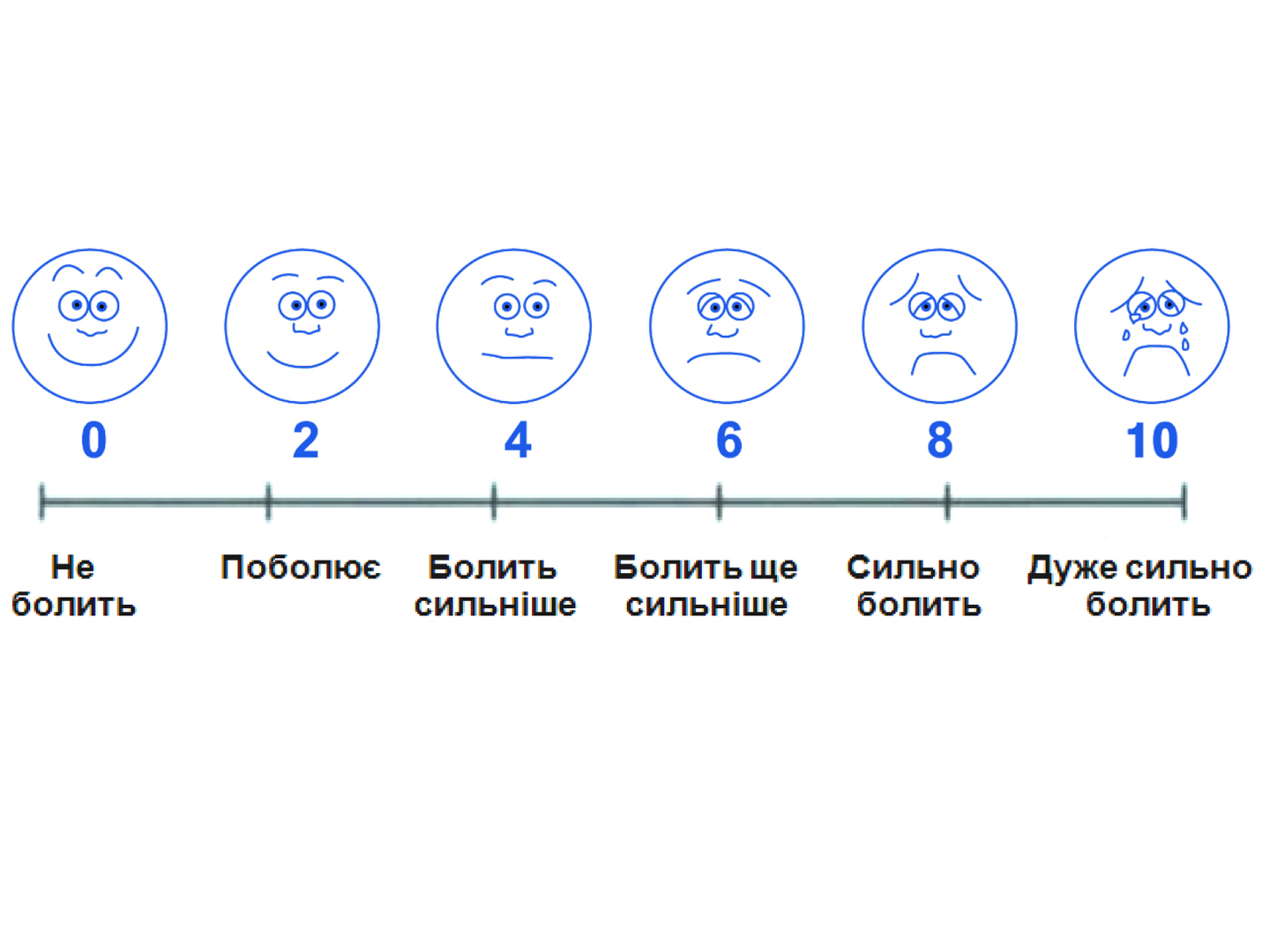Intravenous Paracetamol efficacy for postoperative pain control in patients with diabetic foot syndrome
P.L. Shupik National Medical Academy of Postgraduate Education of the Ministry of Health of Ukraine, Kyiv
The aim of the research is to determine the intravenous paracetamol effectiveness for postoperative pain control in patients with diabetic foot syndrome (DFS).
Materials and methods. The characteristics of pain syndrome has been analysed in 149 patients, among whom 88 (59.0%) were women. Patients were divided into two groups. 1st group – 77 patients with neuropathic form of DFS, 2nd group -72 patients with ischemic form of DFS. The groups have been compared in mean age, body mass index and duration of diabetes. The main subgroup, with a paracetamol included in the treatment program (“Infulgan” manufactured by “Yuria-Pharm”, Ukraine), and control subgroup (pain control with other non-steroidal anti-inflammatory drugs) were allocated in each group.
Results and discussion. It was established that the postoperative pain syndrome features in patients depend on the form of DFS and applied method of pain control.
Conclusions. Anticonvulsants in combination with paracetamol are useful for adequate treatment of pain syndrome in patients with neuropathic form of DFS, paracetamol in combination with pentoxifylline – in patients with ischemic form of DFS. The use of intravenous paracetamol in complex of surgical treatment in patients with DFS allows to reduce severity of postoperative pain syndrome, reduce inpatient stay duration and improve the comfort of patient in the hospital.
Key words: postoperative pain control, paracetamol, diabetic foot.
Diabetic foot syndrome (DFS) – a set of anatomical and physiological changes that are developed as a complication of diabetes mellitus (DM) and caused by diabetic neuropathy, angiopathy and the development of purulent necrotic processes. Many patients with DFS may have pain syndrome, which has some differences depending on the form of DFS.
Pain in neuropathic form is characterized by the greater intensity at night than during the day; intensifying at rest, reducing in walking; paresthesias, hypersensitivities and hyperpathic tint. To treat this type of pain syndrome there are a number of medicinal products proposed: opioids, non-steroidal anti-inflammatory drugs (NSAIDs), antidepressants, serotonin inhibitors, etc. [1]. Pain syndrome in ischemic form of DFS is characterised by symptom of intermittent claudication. [6] In case of worsening, ischemic pain occurs at rest, which is intensified in the horizontal position of the body. This causes sleep disorders, increases the suffering of patient. It is advisable to use NSAIDs, non-opioid central analgesics etc. to treat this type of pain.
NSAIDs, despite their beneficial properties, often can not be used because of the risk of complications related to their adverse effects (ulcerogenicity, reduced blood flow, impaired renal function, increased volume of blood loss during surgery), especially in patients with peptic ulcer disease, kidney diseases (diabetic nephropathy), hypocoagulation, thrombocytopenia, bronchial asthma [5]. In such cases, paracetamol can be used, whereas undesirable adverse effects are rare.
Paracetamol – is one of the most popular non-opioid analgesics in all branches of medicine. It is used in various types of pain – from mild to severe as monotherapy or in combination with another analgesic – NSAID, “Tramadol”, codeine. Rapid analgesic effect, good tolerability is typical for paracetamol. Despite belonging to a central acting analgesic, paracetamol has no negative effects characteristic of opioid analgesics: inhibition or activation of the centres of the brain stem or medulla oblongata (sedation, respiratory depression and reduced blood circulation, nausea, vomiting). [3] Until recently there was no paracetamol dosage form for parenteral perioperative application, it was widely used for postoperative pain control in oral or rectal forms, separately or in combination with opioids. However, oral analgesic administration is impossible after many types of surgeries, and in case of rectal administration of the drug, its absorption may decrease [2, 5].
Recently, a new form of paracetamol has appeared -for intravenous administration as a solution for infusion in vials (1 g per 100 ml), which has osmolarity of 290 mOsmol /l, good tolerability and other benefits: usability and convenience of administration that saves time of personnel [8].
The aim of the research is to determine the intravenous paracetamol effectiveness for postoperative pain control in patients with diabetic foot syndrome.


